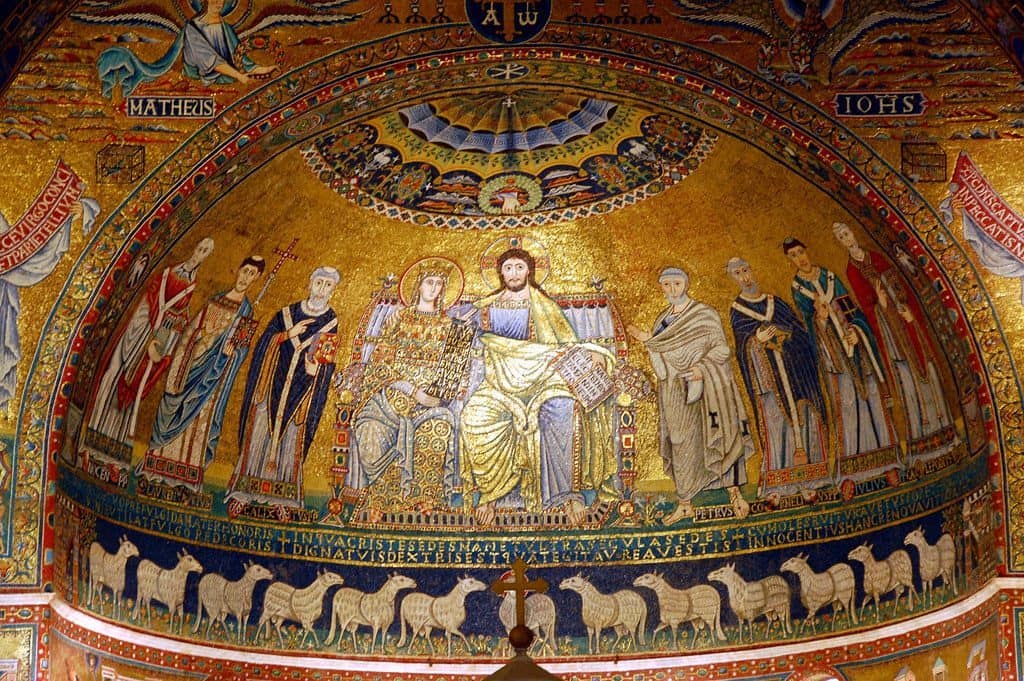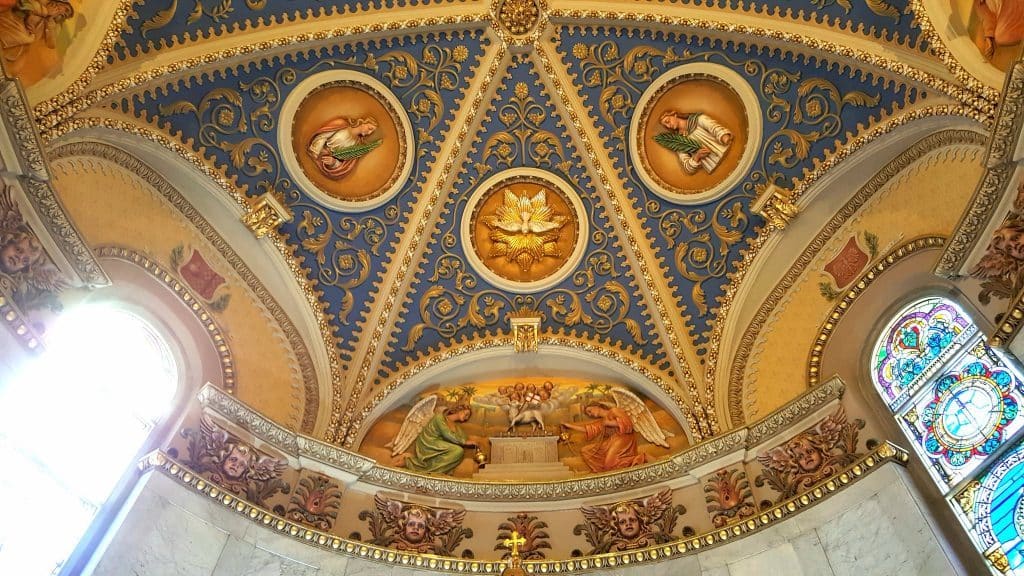The sanctuary of a Catholic church symbolizes Heaven. It is the sacred space, the sanctum sanctorum, where Our Lord in the Blessed Sacrament is reserved and where the Sacrifice of the Mass takes place. It is for these reasons that it is richly embellished. It has to stand out from the rest of the church. The apse, the ceiling of the sanctuary above the altar, even more poignantly calls to mind the heavenly Jerusalem. In the ancient basilicas of Rome, it is common to see vibrant gold mosaics coat the apse. At the Basilica of Santa Maria in Trastevere, Christ and His Mother are enthroned in royal Byzantine attire. Christ is affectionately shown with his arm around his mother, who appears as an empress.
Blue is another color that calls to mind our eternal home. In sacred art, from Eastern iconography to Renaissance masters, blue is traditionally linked to the divine nature of Christ, whereas red points to his human nature.



